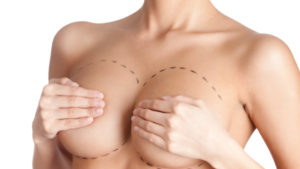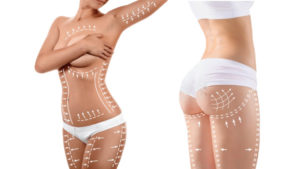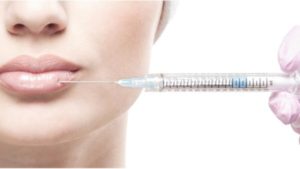
Breast Augmentation
Women who want larger and more shapely breasts, or who have one breast noticeably smaller than the other, often discover a more positive self-image after a breast augmentation. Maryland plastic surgeon Dr. Donald Kress is ready to help you achieve your desired look. Many women considering breast augmentation may also want a breast lift to regain their youthful look.
About the Procedure
Breast augmentation is performed on an outpatient basis under general anesthesia. Most commonly, a small incision is made in the crease under the breast and a space or “pocket” is developed for the implant. Other incisions are possible and can be discussed with Dr. Kress. This pocket can be above the muscle, below the muscle or below the outer fascial covering of the muscle. The last or “subfascial” approach was developed in Brazil but is rapidly gaining popularity with thin active women in the USA. This decision is made in consultation with Dr. Kress and is based on percentage of body fat, the type and size of the implant, physical activity and the status of your family. The implant is then placed in the pocket and the incisions are closed.
Recovery Time
The first week after the surgery, the patient should not lift anything over 15 pounds, but light stretching exercises are essential to optimal recovery. In the second week, patients can progressively exceed the 15-pound restriction but must avoid “bouncy” activities such as running, horseback riding, motorcycles, and jet skis. Except for some of the extreme professions, everyone can resume full normal activities in the third week. A single suture is present on each side and is generally removed on the eighth day. Patients with light desk or computer jobs can return to work in 2-3 days, while more strenuous jobs could require a full week or longer.
About the Implants
There is no known association of implants, either saline or cohesive gels with any disease. There is no effect on the future risk of breast cancer development. The saline implant consists of a fully-cured silicone bag filled with an intravenous quality saline solution which is added through a sealed system for extra safety. Modern Cohesive Gel implants are pre-filled with a medical grade silicone gel. What are the differences?
Results
A more shapely breast contour in and out of clothing. Better balance and symmetry between breasts. The result is a soft natural appearing breast, an improved self-image, and a whole new way to shop for clothes with tops and bottoms that match.
Costs
Starting at $7,245.00 +
Breast Enlargement FAQs
What happens if a silicone implant leaks?
The new highly cohesive (gummy bear) silicone implants are very stable. Even if an MRI (Magnetic Resonance Imaging) detected a disruption of the implant shell, nothing leaks out, spreads or causes irritation. In fact, the implants and gel are so stable that there is a question whether or not damaged implants even need to be exchanged.
What happened to the soybean oil implant?
The soybean oil implant has been withdrawn from the market and there are class action suits pending – incidentally, most of the “experimental” implants have been withdrawn.
What are teardrop implants?
The teardrop implant, as its name suggests, has a fullness of the lower portion of the implant similar to a natural breast shape with a thinner extension toward the upper chest. The teardrop implant can give an excellent breast shape to a person with underdeveloped muscles or an unusually shaped chest. In a person with normal muscular development it can emphasize the muscles and not the breast.
Can fat be injected into the breast for fullness?
There are strong proponents of this technology. Most plastic surgeons will do small areas such as old biopsy sites, but augmentation entirely with fat is still uncommon, time-consuming, expensive and yielding a very conservative result. The injected fat can resorb with time and there are still questions about confusing mammograms after fat injections that can mimic early cancers.
Will implants affect breastfeeding?
The FDA suggests that all plastic surgeons tell their patients that implants can contribute to the inability to breastfeed. 20% of all women are unable to breastfeed and there are no studies that show an increase in this number with a patient that have implants. There is no known effect of implants on breastfeeding, pregnancy, risk of cancer, risk of fibrocystic disease or other known diseases. There have been numerous studies to support this finding.
How long do implants last?
50% of all saline implants will fail within 10 years requiring replacement.
The FDA prohibits implant manufacturers from calling the new cohesive implants “lifetime” but in most of the other countries, they are considered lifetime implants.
“I am so happy I had this done. I feel good about my body, no matter what I’m wearing-knit sweaters, bathing suits, low-cut blouses. They all look so much better on me now.”
M.W.
Patient
You...Only Better
Contact us today for your free, no-obligation consultation.




